Heritage
-
Turnhout playing cards
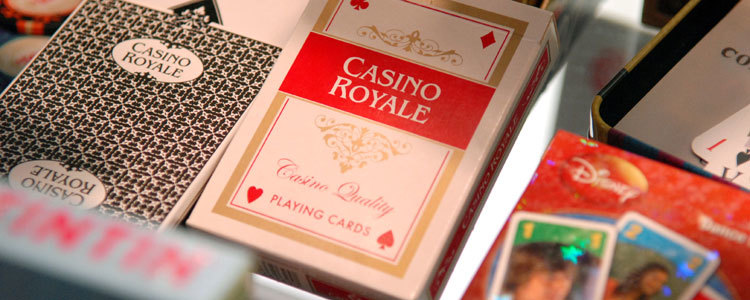
Turnhout and playing cards have been an ideal combination since the beginning of the 19th century. Pieter Jozef Brepols printed the first playing cards in our city in 1826: the start of a thriving international industry.
Cards for the world
This flourishing industry was carried on by Cartamundi from 1970 onwards. A joint venture in which the playing cards activities of Brepols, Van Genechten and Biermans were bundled together.
Cartamundi (Latin for cards for the world) became the largest producer and seller of cards and games in the world. They carry the motto 'Sharing the magic of playing together' worldwide. Even now, approximately 2,000 years later, playing cards are still doing well. They are timeless, you see them everywhere and they bring people from all generations together. Secretly, cards have also conquered your heart.
City of the playing cards
Through this perfect marriage Turnhout can rightly call itself 'City of playing cards'. This pride is reflected in printed publications, in the streets and of course in the National Museum of the Playing Cards. A successful exhibition in the 20th century about these cardboard cards was behind the reason for dedicating a real museum to playing cards.
-
Turnhout lace
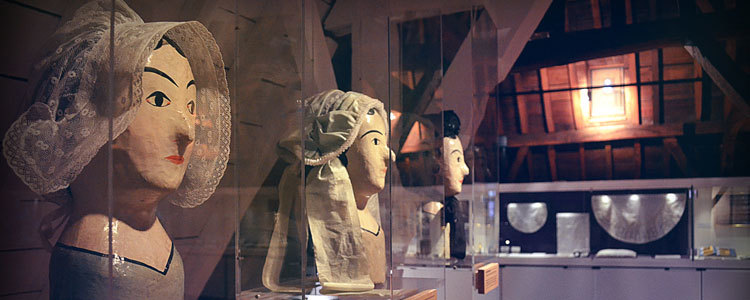
We are all familiar with the famous Bruges lace, but did you know that Turnhout also has a rich lace history? From the start of the 17th century the bobbin of lace was undertaken in our city.
Paris, English or Turnhout lace
These lace types were created in the 17th century. And have been designated with their original place names. Well known laces were the Malines lace, the Lille lace, the Binche lace, the Valenciennes lace and the Paris lace. Turnhout adopted laces that had not been made in their places of origin for a long time. Therefore, fortuitously, Turnhout had acquired the monopoly on the Malines lace or ‘ijsgrond’ (ice surface), Paris lace and Lille lace. The Paris lace was bobbined in large quantities in Turnhout and was therefore renamed Turnhout lace. This lace was very popular in England and was also popularly called English lace.
Symbol for Turnhout
The reputation of Turnhout for its bobbin lace is owed to the generations of mothers who frequently passed on their knowledge of lacemaking to their daughters. Lace, therefore, was an emblematic symbol of Turnhout for a long time. But after the Second World War it quickly lost prominence because the change of lifestyle created less demand for traditional costumes. Nevertheless, to this day, wonderful artistic lace is still bobbined in Turnhout. We owe this to the Lace department of the Academy of Fine Arts in Turnhout.
At the Taxandria museum you will find a rich collection of lace and you can see lace ladies at work on a regular basis.
-
Turnhout giants
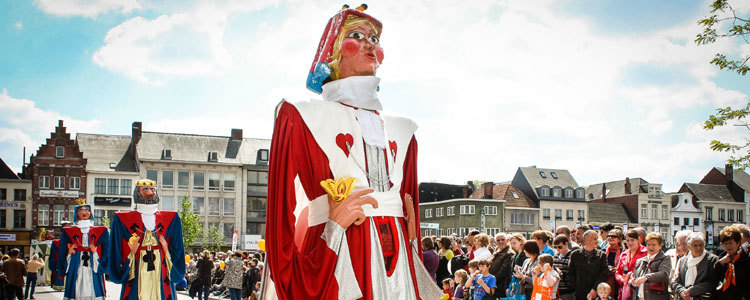
Since the Middle Ages, the procession of giants has been one of the biggest attractions at festive ceremonies and joyful celebrations. The traditional Turnhout giants, with the accompanying Giant Club, bring joy and pleasure to the crowds.
Largest in Europe
In total, there are 31 giants. And so Turnhout has one of the largest giant clubs in Europe. There is a group of 19 giants who portray a village community, such as a mayor with a lady, a catholic father with a maid, a ‘champetter’ (village constable), a judge, a poacher, a postman... But as the world centre of the playing cards, it goes without saying that playing cards giants cannot be absent. This group of twelve giants depict the prints of the gaming cards in beautiful colours.
During parades, the Turnhout giants surprise their spectators time and again with their beautiful dances, walking and turning movements and by their humorous mobility.
In good weather, the giants come out during festivities. Otherwise you can admire them in the central entrance hall of the City Hall.
-
Turnhout comic strips
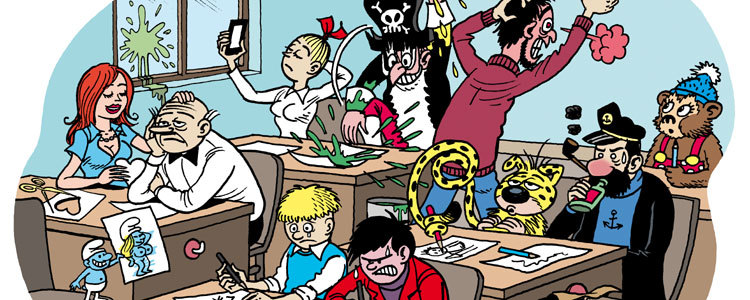
Turnhout is not only famous for its playing cards, but also comic strips. Undoubtedly, the presence of Stripgids (comic strips guide) has something to do with this.
Comic strips guide
Stripgids is the publisher of the eponymous magazine that appears twice a year and keeps a finger on the pulse of what is happening in the world of the Flemish and international comics.
Bronze Adhemar
The Bronze Adhemar, the most important award in the field of illustrated stories in Flanders, is also awarded by them. This prize, associated with the Flemish Culture Award for Comics since 2003, has been bestowed every two years since 1977 and is named after a character from the series 'Nero' by Marc Sleen.
Flemish Documentation Centre for Comic Strips
In the library you will find the Flemish Documentation Centre for Comic Strips or the largest collection of strip documentation in Flanders. With a collection of 2,000 reference books on comics, complementary to the comic collection of approximately 25,000 titles at the Turnhout Library and linked to the catalogue of the Belgian Comic Strip Centre in Brussels, this documentation centre is of international significance.
Comic strip walls
Strip Turnhout has brightened up the streets in four locations with several comic strip walls. These drawings are made by comic strip artists who clearly have already earned their artistic reputation. Look for the comic strip walls in the following locations:
- Warandestraat - Jan Van der Veken
- Begijnenstraat - Reinhart
- Bloemekensgang - Ulf K.
- Wollewei - Merho
- Hertenstraat - Jan Bosschaert
-
Holy Cross procession
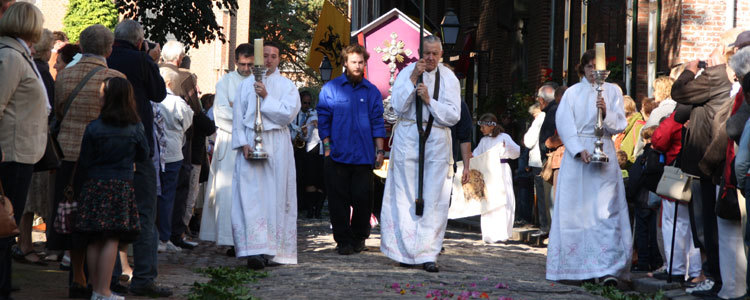
In the Roman Catholic church, processions are parades in which the clergy and the faithful step inside the church or through the parish.
The procession at the Turnhout beguinage is organised for the feast of the Holy Cross dedicated to the ordination of the church and comprises three parts. A first part deals with the Holy Cross and the beguinage. The second part is dedicated to Our Lady and the third part to the Blessed Sacrament.
Annual tradition
The Holy Cross procession is an annual tradition of the beguinage. Children and adults depict various themes in the procession. Reference is made to the Holy Begga and the beguine movement.
The feast of the Exaltation of the Cross is celebrated on the 14th of September. Thus, every year around this day, the procession starts after the Eucharistic celebration of 9.30 am.
-
Battle of Turnhout
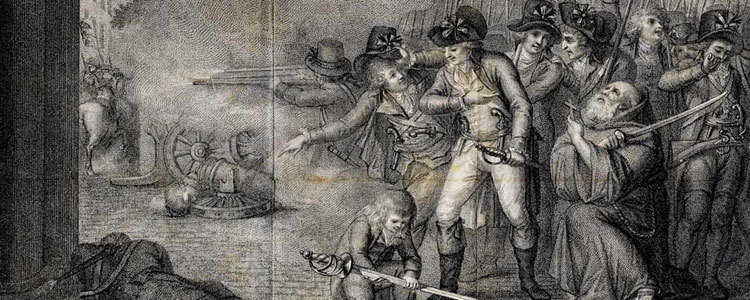
800 years ago, Turnhout was a small settlement located around the hunting lodge of the dukes of Brabant. The duchy then included almost the entire area of the current province of North Brabant, the city of 's Hertogenbosch and the provinces of Antwerp and Brabant. Duke Henry I ceded city rights to a number of Kempen/Campine municipalities, including Turnhout.
The city was never walled and so regularly fell prey to armies or itinerant gangs. But Mary of Brabant and Mary of Hungary gave the city a new impetus to the city. And via Amalia van Solms, widow of Frederick Henry, Prince of Orange, the Dutch king is still Lord of Turnhout.
Heroic patriots
On October 27, 1789, 3 500 trained and well-armed Austrians approached Turnhout. A considerable portion of the patriots were entrenched behind the graveyard wall of St. Peter's Church. The first Austrian attack took place at the beginning of the Gasthuisstraat. After they invaded and robbed the hospital, the real battle began. The patriots, actively supported by many civilians, pelted the enemy, so that the Austrians were attacked on all sides at the Hofpoort.
Four hours later, the Battle of Turnhout ended with the honourless withdrawal of the imperial army. This event marked the start of a small year of independence and, as it were, the prelude to definitive independence in 1830.
Vzw Commemoration of the Battle of Turnhout
The vzw Commemoration of the Battle of Turnhout was founded in 1987. This non-profit association organises and coordinates activities that regularly commemorate the ‘Battle of Turnhout 1789'. It also organises activities to promote Turnhout. You can follow their ins and outs on the website.
-
Carillon
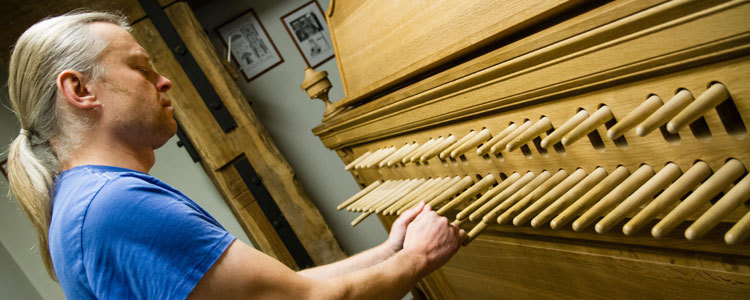
In the tower of St. Peter's Church you will find a carillon of great historical value. Andreas Jozef Vanden Gheyn, master bell-founder from the 18th century, cast a carillon with 38 bells for this tower, in 1775.
Opus 17
Andreas Jozef and his brother Matthias are the two most important personalities in the Vanden Gheyn family of bell-founders, a legacy which spans over three centuries. Andreas Jozef was very active as a bell-founder and cast a total of 23 carillons of which only ten were spared after wars, fires and the like. The Turnhout carillon was his opus 17. Not only is Andreas Jozef regarded as the best bell-founder in our region, the Turnhout bells are also regarded as one of his finest works.
Brother Matthias was famous as a church musician, composer, bandmaster and carillonneur in Leuven. He most likely often worked with his brother to tune the bells. Without doubt, his carillon music will have sounded a lot in Turnhout at the end of the 18th century. Since 1998, Koen Van Assche has been giving carillon recitals every Saturday morning.
